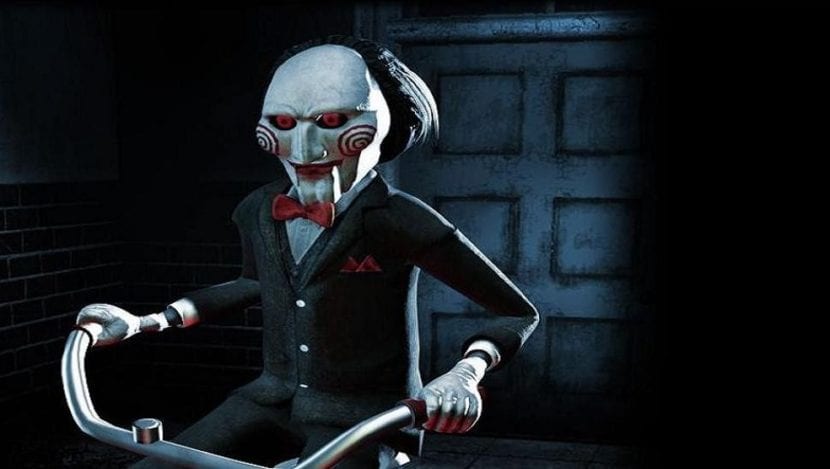
Fear sells as much as sex. At the movies, he even sells a lot more and sample of this is the Saw saga. Eight cult films (within a very specific audience) that are as profitable as they are terrifying. Its worldwide collection reaches US $ 975.400.000. This against a combined budget of "just" $ 77 million.
In general terms, the franchise has a fairly active community of followers. In the same way, except for the first installment that received mixed evaluations, all the tapes have been despised by specialized critics. Which, as is normal in these cases, keeps both producers and the fans themselves careless.
Porn torture and narrative shamelessness
Although gore cinema is nothing new, with the Saw saga it reached a new level. The high degree of graphic violence and sadism shown on screen, led many critics and theorists to coin the nickname of torture porn.
On the other hand, the filmmakers have not cared much about maintaining coherence within the narrative structure. In factPart of the "charm" of the franchise, are the "lightness" within the argument. They are elements that, accidentally or deliberately, end up entangling viewers even more within the twisted universe in which the plot takes place.
Film Score
Like any film franchise that boasts of being one, the soundtrack of the Saw saga has an emblematic “main theme”. Chords that make the hair stand on end just by being evoked and that unleash excitement among movie fans. Hello zepp is the name of the "Saw tune". It was composed by American Charlie Clouser.

Saw saga: eight movies and a lot of blood
Actually there are 9 films that make up the Saw saga, if the short film known as Saw 0.5, made in 2003. Malaysian filmmaker James Wan and Australian screenwriter and actor Leight Whannell pooled what little money they had to produce this piece. The goal with which they got down to work was use it as a kind of "pilot", while they were looking for a studio to shoot the complete film.
The plan worked. The production company Evolution Enterteiment decided to bet on the project. They approved a budget of US $ 1.200.000 for its production, in addition to recruiting actors with experience, such as Danny Glover and Cary Elwes.
Saw it was intended to be marketed only in homemade format. But after showing at the Sundance and Toronto festivals, it attracted so much attention from audiences that Lionsgate Films decided to buy the distribution rights. It premiered in October 2004, the weekend before Halloween. The result? More than $ 100 million raised at the box office and the birth of a franchise.
The argument Saw
Jigsaw or Puzzle is the alter ego of John kramer (Tobin Bell), a serial killer who executes his crimes, within an elaborate staging very theatrical. Victims have the chance to get out alive, but not before mutilating themselves in order to escape.
The first installment takes place inside a rickety, windowless bathroom. There are confined Dr. Lawrence Gordon (Cary Elwes) and photographer Adam Stanheight (Leigh Whannell). All while detective David Tapp (Danny Glover) follows a series of leads, after the sadistic murderer.
Saw II
For the second part, James Wan delegated the direction to Darren Lynn Bousman and limited himself to production tasks. While the co-creator of the series, Leigh Whannell, would repeat his work as a screenwriter. It was shot with a budget four times greater. It was released exactly one year after the original version hit theaters. This time with a marketing campaign with resources to be aggressive.
The plot, much more convoluted, served to expose the motivations of the ruthless Jigsaw: he suffered from incurable cancer, so he decided to become a punisher of people in good health who did not value life. Viewers would also discover that even if the protagonist died, a legion of helpers would keep his "legacy" alive.
Saw III
The Lynn Bousman-Whannell duo repeats their work in this third installment. Tape that at the time was advertised as the end of the Saw saga. The film picks up the sequence of events at the same point where it ended Saw II. It premiered in October 2006.
A script built on flashbacks, where the forgiveness appears as a key element within John Kramer's motivations. Although the plot could be "melodramatic" for part of the audience familiar with the story, the doses of gore cinema continued to represent the differential value.
Deliveries IV, V, VI and VII
Most enthusiastic fans of the Saw series consider these four films as "Minors". The most extreme even dismiss them as unnecessary and as not honoring the initial trilogy.
However, continued box office success kept the franchise going, and this based on a very basic and elemental gore cinema, both narratively and visually. Not even Saw VII 3D managed to arouse real enthusiasm.
What most fans appreciate is that history kept John Kramer dead. (He passed away at the end of Saw III). The most skeptical feared a kind of resurrection in the style of Friday 13.
Saw VIII
From Saw VII 3D, released in October 2010, it seemed that Jigsaw would finally "rest in peace." However, over the following years, both James Wan and Leigh Whannell were hinting that perhaps there would be more. Until in October 2017 the expected (at least by the most loyal fans) eighth installment of the Saw saga arrived.
The film, with clear references from the first seven installments, can be seen without knowing the previous stories. Although the response from the public was discreet, its low production cost and a tireless legion of followers, make it possible to presume that a ninth chapter will not wait.
Image sources: The Den of Vampires and Other Monsters